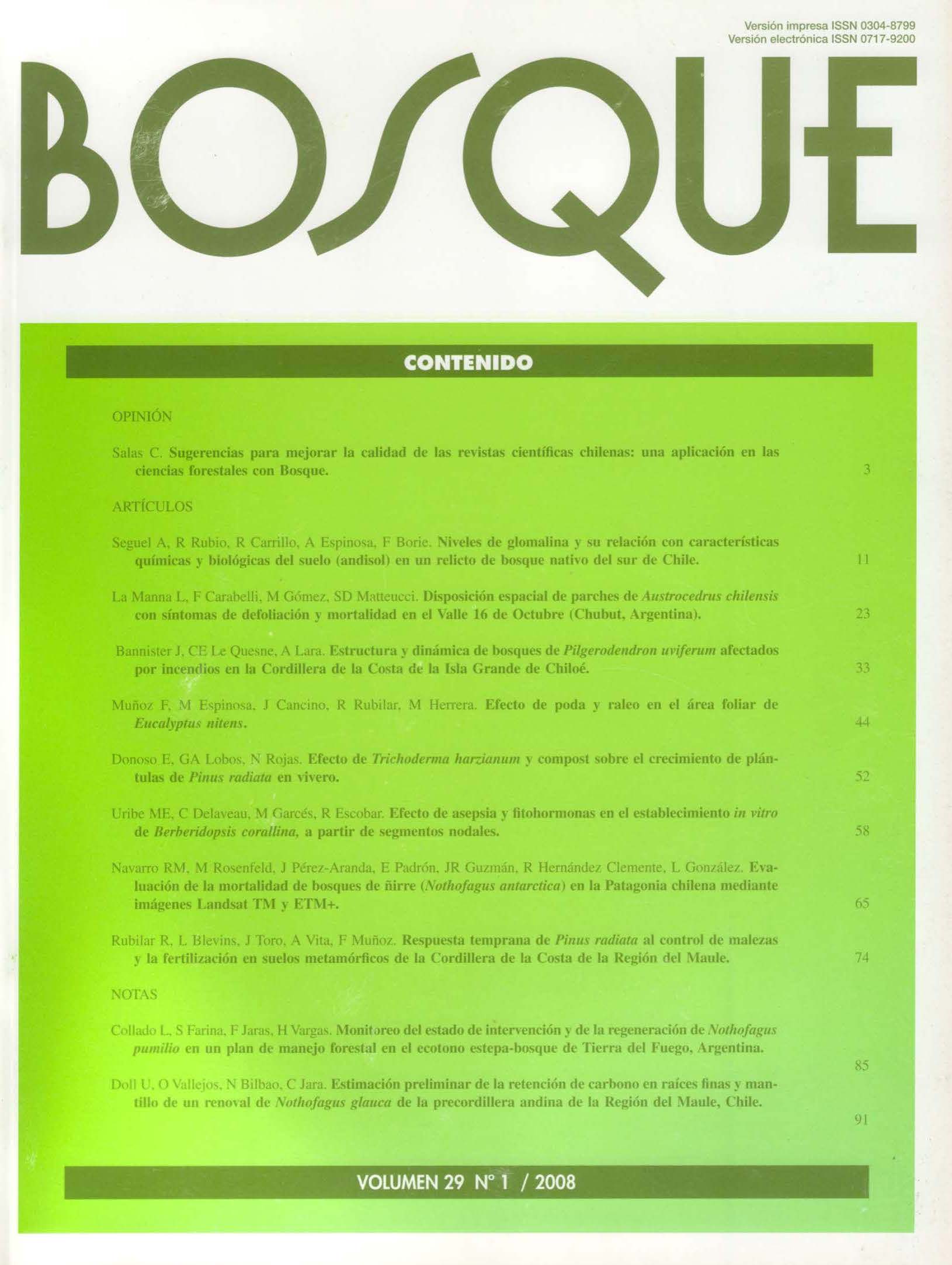Main Article Content
Apr 30, 2008
Abstract
Antarctic beech forests (Nothofagus antarctica (G. Forst.) Oerst.) have shown a major decline process in the past few decades, together with an important lack of specific studies on this type of forest. The aim of this work was to create cartography of the surface of Antarctic beech forests and to evaluate decline levels in the XII Region of Chile. A study area was selected between the cities of Puerto Natales and Punta Arenas (latitudes 50º40’S to 52º40’S) and from latitudes 60º15’W to 74º15’W, where a random stratified sampling was carried out in 68 plots, in which the forest cover, mortality, height, normal diameter and regeneration were measured. Using two Landsat images (1986-2002), the study area was classified in terms of vegetation cover and forest mortality, by means of the normalized vegetation index (NDVI). The forests in this study area are characterized by their high density, and, in over half their surface (27,873 ha) they exhibit some degree of mortality, with 7,585 ha of forest completely affected. The distribution of the mortality in Antarctic beech on the period 1986-2002 showed an improvement on forests condition, which seems to corroborate the hypothesis of a change on perturbation pattern as the major reason for this forest decline process.


